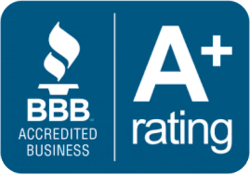How Blocked Ducts Lead to Uneven Heating Throughout the House
Few things are as frustrating as settling into your living room on a winter night only to realize that one corner of your home feels like an icebox. You walk down the hall, and while the bedroom seems fine, the guest room is chilly enough to make you grab an extra blanket. These cold spots can make an otherwise comfortable home feel inconsistent, and no matter how much you adjust the thermostat, they don’t seem to go away.
This uneven distribution of heat isn’t just a minor annoyance. It affects how you use your home, how often your system runs, and how much you pay for energy. Many homeowners assume that their furnace isn’t strong enough or that they need to replace the entire system. In reality, uneven heating is one of the most common problems with central heating setups, and it often has less to do with the furnace itself and more to do with the airways that carry the warm air.
How Heating Systems Work
To understand why certain rooms never seem to warm up, it helps to take a closer look at how a central heating system operates. The process starts with your furnace or heat pump, which generates warm air. That heated air is then pushed through a network of ducts that snake their way throughout the walls, floors, and ceilings of your home. The goal is simple: move conditioned air evenly to every room so each space feels balanced.
Airflow is the lifeblood of this system. If something interferes with the flow, the heated air won’t reach its intended destination with the same strength. Imagine a river blocked by branches and stones—water still moves, but it slows down or diverts in unexpected ways. Your ducts behave in a similar fashion. When obstructions or structural problems exist, the air that should warm one bedroom may get reduced to a trickle before it ever exits the vent.
Obstructions can take different forms. Over time, dust, dirt, and pet hair can accumulate in the ductwork. While it may not seem like a thick blanket, even a thin layer can create resistance against airflow. Another common issue occurs when a vent is accidentally shut or covered by furniture. The air has nowhere to go, so pressure builds and heat is rerouted unevenly. In more serious cases, ductwork might be crushed by shifting construction materials or designed in a way that makes airflow inefficient from the start.
Furniture placement can also play a role. A heavy sofa positioned right over a floor vent or a bookcase pushed against a wall vent can dramatically reduce how much heat a room receives. It may seem harmless, but those physical blockages redirect air away from where you want it most.
Signs Of Blocked Ducts
One of the clearest signs that your ducts are blocked or restricted is when specific rooms in the house never seem to reach a comfortable temperature. You might find yourself avoiding certain spaces in winter because they’re perpetually colder than the rest of the home.
Another indicator shows up in your utility bill. When ducts are clogged or vents are shut, your heating system must run longer to meet the demand set on your thermostat. The furnace works harder, cycles more often, and consumes additional energy, leading to noticeably higher monthly costs.
Weak airflow is another red flag. If you place your hand over a vent and barely feel a breeze, that’s a strong sign that something is restricting the path between your furnace and that room. The air is being produced, but it isn’t making it out with enough force to create comfort.
These issues don’t necessarily mean your entire heating system is failing. Instead, they often point directly to ductwork or airflow restrictions that can be identified and corrected.
The Impact On Comfort And Energy Efficiency
The discomfort caused by blocked or obstructed ducts goes beyond chilly rooms. It changes how you experience your home. You might adjust your daily routine to avoid certain spaces, or you may compensate by using space heaters, which not only add cost but can create new problems for your energy budget.
Uneven heating also places unnecessary stress on the system itself. When a furnace or heat pump has to run longer to heat a space, it shortens its operational lifespan. Components wear out faster, filters clog sooner, and the chance of breakdowns increases. What starts as a cold corner in the home can gradually become a financial drain on your entire heating setup.
Energy efficiency suffers as well. Instead of warming your house evenly and shutting off, your system cycles on more frequently, burning additional fuel or electricity. Over the course of a winter season, this imbalance can translate to hundreds of dollars in wasted energy.
What Homeowners Can Do
There are a few simple steps homeowners can take before calling in professional help. Start by checking the vents in each room. Make sure they’re open, unobstructed, and not hidden beneath rugs, curtains, or heavy furniture. Even a partially closed vent can cause a room to feel noticeably cooler.
Dusting vent covers and vacuuming around them can also make a small but meaningful difference. While this won’t clean the duct system itself, it reduces surface buildup that restricts airflow right at the source.
If the problem persists, it may be time to schedule a duct cleaning. Over the years, debris builds inside the ductwork, and a professional cleaning can restore airflow and improve the overall quality of the air circulating through your home.
Another helpful step is to have a technician inspect the duct system for leaks, gaps, or structural issues. Sometimes, air is simply escaping into walls or attics before it reaches the vent. Identifying and sealing these leaks ensures that the heat you’re paying for actually reaches the rooms you use.
When To Call In The Professionals
While basic maintenance can help, certain situations call for a professional evaluation. If ductwork has collapsed, if airflow is consistently weak throughout the house, or if the heating system is struggling despite routine maintenance, then the issue may be more complex than a blocked vent.
Our professionals have tools to measure airflow, check pressure levels, and identify hidden restrictions. They can also determine whether duct design is contributing to the problem. In older homes especially, duct systems may have been installed in ways that don’t support modern heating equipment. Adjustments or redesigns can make a dramatic difference in comfort and efficiency.
Attempting to fix these deeper problems on your own can be frustrating and, in some cases, can even make matters worse. An expert’s eye not only resolves the current problem but can also help prevent future issues from developing.
Uneven heating is one of those problems that quietly affects daily life, yet it often has a straightforward solution. By paying attention to blocked ducts, restricted vents, and airflow problems, homeowners can reclaim comfort in every room and prevent unnecessary strain on their heating systems.
If you’ve noticed weak airflow, stubborn cold spots, or energy bills that seem higher than they should be, it may be time to bring in professionals who can pinpoint the cause. At MN Duct Pros, our team understands how frustrating uneven heating can be, and we’re ready to help restore balance to your home.
Contact us today to schedule an inspection and find out how a cleaner, more efficient duct system can make every room as warm and welcoming as it should be.


